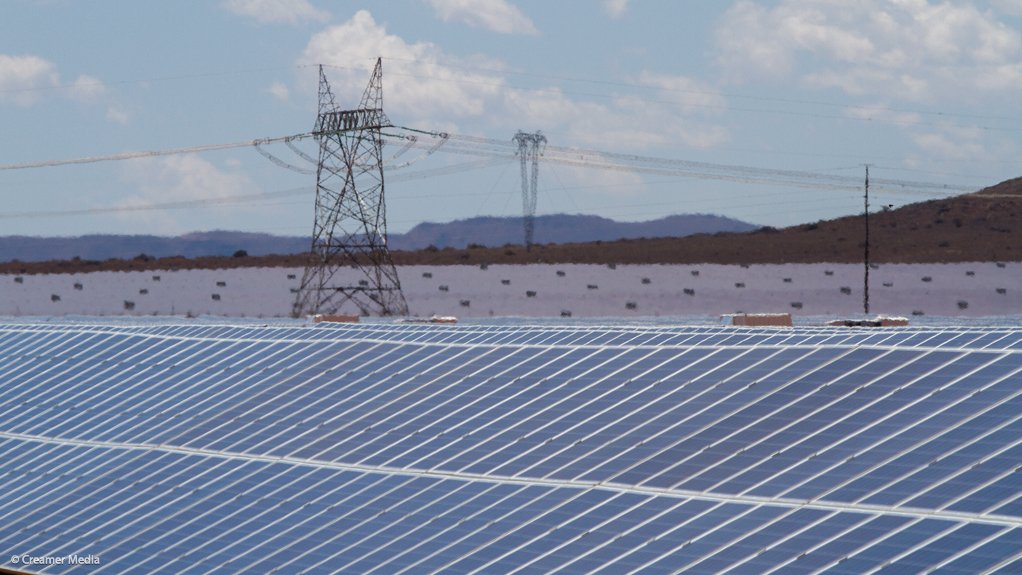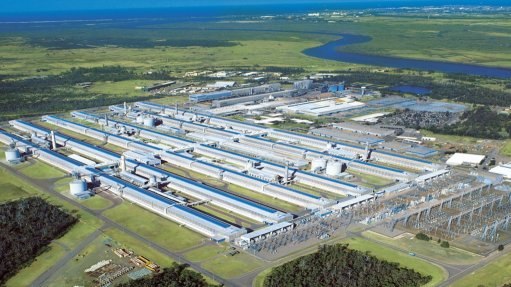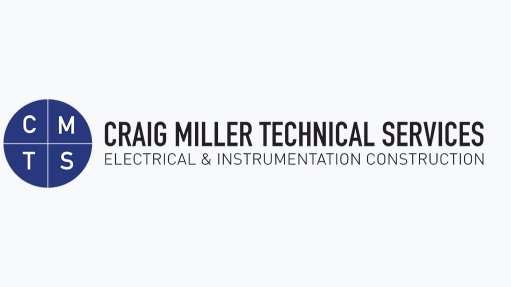Eskom’s ‘onerous’ new grid access rules receive cool reception
Eskom’s newly released Interim Grid Capacity Allocation Rules (IGCAR), formulated in response to surging demand for grid access in a context of acute grid scarcity, have received a cool reception from industry, with some of the conditions included in the new framework being viewed as “onerous”.
GM for operations enablement Velaphi Ntuli says the IGCAR, which have been developed and canvassed over the past six months, have been designed to ensure that shovel-ready generation projects are given priority.
The rules, thus, replace the ‘first come, first served’ framework that has hitherto prevailed with a ‘first ready, first served’ approach.
He reports that the rules are also designed to level the playing field between projects participating in public procurement processes and those being pursued in line with a recent reform allowing private distributed generation projects, including those that wheel electricity through the grid, to proceed without a licence.
The absence of a grid queuing system came to the fore during the sixth bid window of the country’s public renewables procurement programme when none of the 23 onshore wind projects that bid for a 3 200 MW allocation were selected as preferred bids, owing to claims of grid over-subscription in the Western, Eastern and Northern Cape provinces.
Ntuli reports that Eskom is working with the Independent Power Producers Office to finalise the status of projects that have been procured under various public programmes and are, thus, continuing to take up a grid allocation, but which have failed to reach financial close.
Engineering manager Seetsele Seetswana says the new rules retain the principle of non-discriminatory and open access, but reports that Eskom has reserved the right to set aside allocations for future public procurement programmes to avoid a repeat of the failure of bid window six.
To facilitate a shift to the ‘first ready, first served’ principle, Eskom outlined the criteria it would apply to assess the ‘state of readiness’ of a project, including:
- the securing of all environmental and water-use authorisations;
- power purchase agreement heads of terms signed between the independent power producer (IPP) and the end-user;
- confirmation of the appointment of Eskom-approved design consultants for self-build connections;
- measured data for solar for a period of a year and for two years for wind; and
- the payment of a Grid Capacity Allocation Guarantee issued by an Eskom-approved financial institution.
Only once these conditions have been met will Eskom issue a budget quote (BQ) for grid connection, while still reserving the right to revoke such a quote should there be a failure on the part of the IPP to meet any of the milestones outlined in the BQ.
Following a pause of seven months, Eskom will also begin processing BQs again under the new rules, starting with the backlog of applications that has accumulated.
Eskom’s Nonhlanhla Miya reports that the processing of the 40 outstanding applications in the Eastern, Northern and Western Cape provinces would be processed as from the end of June and that the outcome of that process will be communicated by the end of July.
The projects have a combined capacity of some 5 GW and those that are approved should secure BQs soon after having paid their guarantees, while those that fail to meet the IGCAR criteria will receive BQ refunds.
South African Independent Power Producers Association (SAIPPA) chairperson Brian Day has described the new rules as “dysfunctional”, noting that they require grid connection to be done right at the end, and in terms of resource definition are more onerous than what is expected from a bank that might be funding up to 80% of an IPP project.
“It's not rational.
“The amount of work on the side of the IPP or developer is now enormous, long before grid connection is known to be possible.
“The amount of money they've got to spend on technical preparations and on lawyers is enormous,” Day asserts.
He notes that all this money and effort has to be expended in the absence of any indication as to whether or not a grid connection exists.
“Project development is really the art of parallel processes, with the securing of budget quotes for grid access being one of the things that you have to start very early in parallel to other processes.
“Now Eskom is saying IPPs must do everything else and then do your grid access right at the end.
“This will inevitably add time, because now you have a series activity added at the end instead of it being progressed as a parallel activity.”
SAIPPA would have, thus, preferred Eskom to have kept its previous approach largely intact, while including some queuing rules and introducing a stipulation that IPPs show firm proof of the project reaching financial close and the construction contract being initiated within 12 to 18 months of having received a grid allocation.
Such a ‘use it, or lose it’ approach would have addressed the grid sterilisation that has been allowed to develop as a result of various projects failing to reach financial close, notably those projects procured under government’s risk mitigation and recent renewables rounds.
South African Wind Energy Association (SAWEA) CEO Niveshen Govender expressed appreciation for the efforts made by Eskom to ensure a fair, equitable and transparent allocation of the limited available grid capacity, but also expressed concern about the “onerous criteria imposed”.
“As outlined during the engagement session, the proposed rules that include the primary energy resources assessment, which for wind is two years of measured data, is in our view, an unnecessary and unreasonable requirement and could potentially delay the implementation and roll-out of new wind projects,” Govender states.
SAWEA has, thus, called for further engagement and consultation between Eskom and the industry to understand “the implications, practicalities, and possible unintended consequences of the rules”.
“As such, this approach should be considered an interim measure until South Africa has sufficient transmission infrastructure built to integrate significantly more renewable energy into the energy mix at an accelerated rate.”
South African Solar PV Industry Association CEO Dr Rethabile Melamu has also expressed appreciation to Eskom for the efforts it is making to resolve “a very real problem”.
Nevertheless, she questions whether the interim rules are legally binding and whether the increase in requirements may not have the effect of freezing out smaller developers.
“There is an industry concern on Eskom being a truly independent judge in the matter given that this role typically resides with the National Energy Regulator of South Africa.
“We look forward to Eskom providing some clarity in order to allay concerns in this regard,” Melamu says.
She also notes that any increase in “onerous” requirements will serve to raise the hurdle rate, which could further cement the dominance of larger established IPPs.
“The capacity of the Eskom Grid Access Unit to process applications at the rate required by industry and to solve the energy crisis should be enhanced.
“To assure investors the criteria for grid capacity to be revoked must be made explicitly clear and must be applied in a fair and transparent manner,” Melamu concludes.
Article Enquiry
Email Article
Save Article
Feedback
To advertise email advertising@creamermedia.co.za or click here
Press Office
Announcements
What's On
Subscribe to improve your user experience...
Option 1 (equivalent of R125 a month):
Receive a weekly copy of Creamer Media's Engineering News & Mining Weekly magazine
(print copy for those in South Africa and e-magazine for those outside of South Africa)
Receive daily email newsletters
Access to full search results
Access archive of magazine back copies
Access to Projects in Progress
Access to ONE Research Report of your choice in PDF format
Option 2 (equivalent of R375 a month):
All benefits from Option 1
PLUS
Access to Creamer Media's Research Channel Africa for ALL Research Reports, in PDF format, on various industrial and mining sectors
including Electricity; Water; Energy Transition; Hydrogen; Roads, Rail and Ports; Coal; Gold; Platinum; Battery Metals; etc.
Already a subscriber?
Forgotten your password?
Receive weekly copy of Creamer Media's Engineering News & Mining Weekly magazine (print copy for those in South Africa and e-magazine for those outside of South Africa)
➕
Recieve daily email newsletters
➕
Access to full search results
➕
Access archive of magazine back copies
➕
Access to Projects in Progress
➕
Access to ONE Research Report of your choice in PDF format
RESEARCH CHANNEL AFRICA
R4500 (equivalent of R375 a month)
SUBSCRIBEAll benefits from Option 1
➕
Access to Creamer Media's Research Channel Africa for ALL Research Reports on various industrial and mining sectors, in PDF format, including on:
Electricity
➕
Water
➕
Energy Transition
➕
Hydrogen
➕
Roads, Rail and Ports
➕
Coal
➕
Gold
➕
Platinum
➕
Battery Metals
➕
etc.
Receive all benefits from Option 1 or Option 2 delivered to numerous people at your company
➕
Multiple User names and Passwords for simultaneous log-ins
➕
Intranet integration access to all in your organisation





















